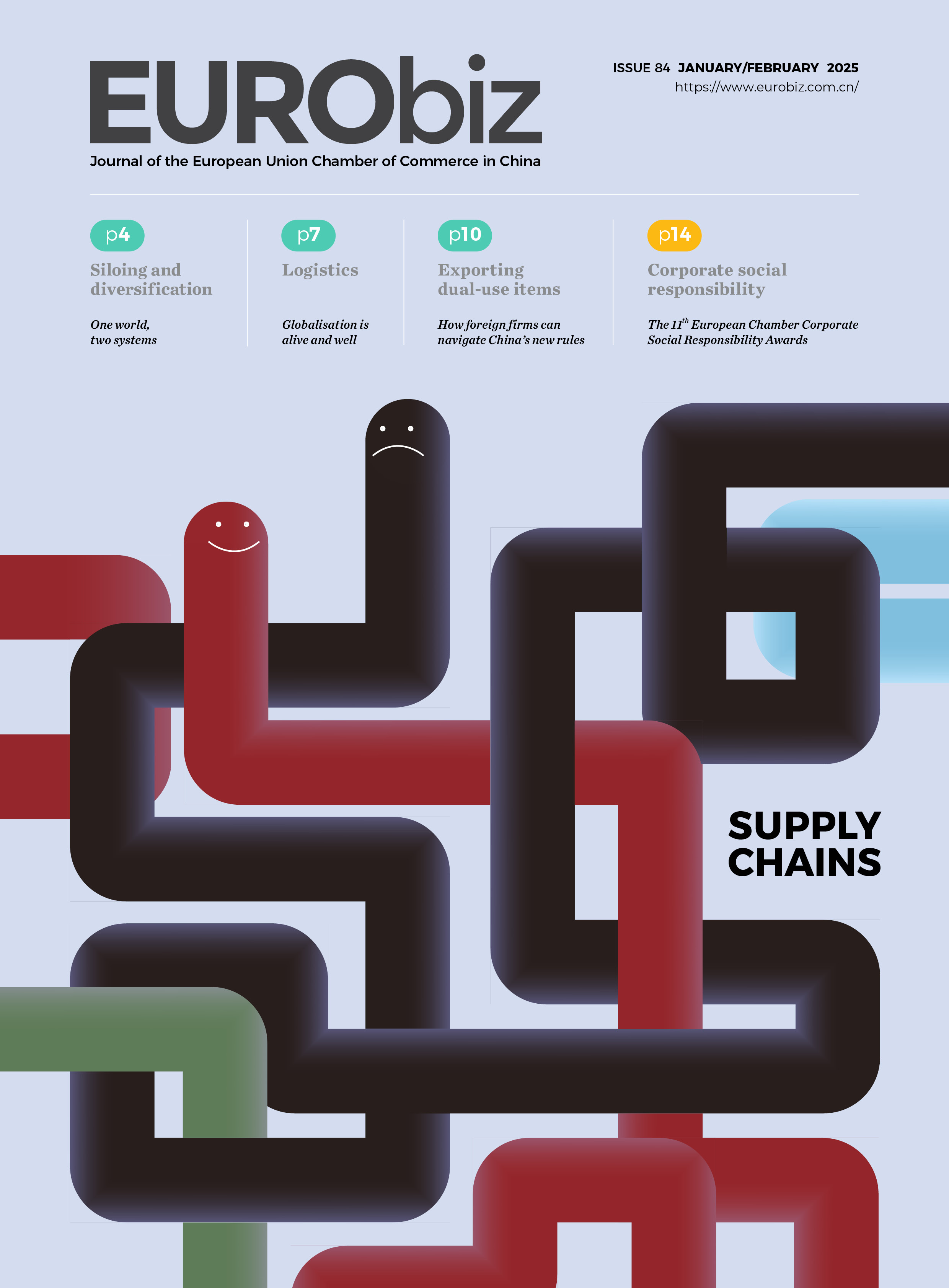
How foreign firms can navigate China’s new rules
On 1st December 2024, new regulations on the export of dual-use items drafted by the State Council were put into effect. In this article, Carlo Diego D’Andrea and Aris Xie of D’Andrea & Partners Legal Counsel explain the major issues and impact on foreign companies.
The Regulations on the Export Control of Dual-use Items (Regulations) aim to address issues such as the relatively scattered nature of existing laws and insufficient control measures, which have important implications for the supply chain.
Definition of ‘dual-use items’
Article 2 of the Regulations explicitly defines ‘dual-use items’ as goods, technologies and services that have both civil and military applications, or that contribute to enhancing military capabilities. This includes items that can be used for the design, development, production or use of weapons of mass destruction and their delivery systems, as well as related technical data.
The specific scope of dual-use items is currently outlined in documents such as the Catalogue for the Administration of Import and Export Licences for Dual-use Items and Technologies, the Control List of Nuclear Dual-use Items and Related Technologies Export Control, and the Control List of Missiles and Related Items and Technologies Export Control.[1] Article 11 of the Regulations stipulates that the export control list for dual-use items will be formulated, adjusted and published in coordination with relevant national departments in accordance with procedures.
Export activities subject to the Regulations
The Regulations cover the transfer abroad of dual-use items from China, as well as the provision of dual-use items by Chinese citizens, legal entities and unincorporated organisations to foreign organisations or individuals. This includes trade-related exports and transfers through donations, exhibitions, collaborations and aid. Imagine a scenario in which an enterprise’s exports involve technologies, goods or services listed in an export control list or are covered by temporary control announcements. In such a case, it must fulfil the compliance obligations stipulated in the Regulations and apply for an export licence from the Ministry of Commerce (MOFCOM).
Dual-use item export licensing system
To determine whether an export requires an export licence, enterprises should compare their goods and technologies against the export control list and temporary control announcements. If they are unable to make a determination on their own, they should consult the MOFCOM to avoid potential legal risks.
The Regulations have abolished the registration system for dual-use item export operators, allowing export operators to apply directly for export licences without prior registration. Licence types include single-use licences and general licences.
Furthermore, under Article 13 of the Export Control Law, when reviewing applications for the export of controlled items, the national export control authority will approve or deny the request based on considerations such as national security interests, the sensitivity of the controlled items and the destination country or region. These considerations are crucial in aligning export activities with national security interests and safety requirements. If, after evaluation, an application is denied by the MOFCOM, it is crucial to note that the affected company has the legal right, outlined in Article 41 of the same law, to seek administrative reconsideration if they wish to challenge the rejection of their export licence. This legal provision offers a formal mechanism for companies to dispute decisions made by regulatory authorities in matters related to export controls.
Conclusion
The new developments in China’s dual-use items export legislation have significant implications for the supply chain. European companies with operations in China, should pay careful attention to the following aspects of the Regulations:
- If enterprises need to apply for a general licence, they must establish an export control compliance management system and ensure its proper operation in accordance with the Regulations.
- Enterprises should choose stable and reliable export channels and verify the authenticity of the end users and intended purposes of the exports.
- Considering that the Regulations explicitly require export operators to properly preserve documents related to the end users and intended purposes of dual-use item exports—such as certificates, contracts, invoices, accounts, records, documents and business correspondence—for a retention period of no less than five years, enterprises should establish a corresponding document management system.
In conclusion, to thrive in today’s dynamic global environment, businesses must proactively adapt by enhancing compliance frameworks and cultivating agile, diversified supply chains to reduce vulnerabilities to geopolitical shifts, trade disputes and regulatory uncertainties. Strengthening compliance requires robust internal audits, real-time monitoring systems and cross-border legal expertise to align with evolving regulations, thereby minimising exposure to fines, sanctions and reputational risks. Simultaneously, by diversifying suppliers across regions and fostering strategic partnerships, companies can reduce their dependence on a single supplier or region and mitigate the risk of supply disruptions. Beyond risk mitigation, companies should leverage technologies like artificial intelligence, predictive analytics and blockchain to enhance supply chain transparency and responsiveness. By integrating these strategies, organisations can not only navigate complex political and economic challenges but also position themselves as competitive, forward-thinking players in an interconnected yet unpredictable marketplace.
Carlo Diego D’Andrea is managing partner at D’Andrea & Partners & Legal Counsel. Aris Xie is a counsel at the firm.
D’Andrea & Partners Legal Counsel is a leading international law firm, with European headquarters
situated in Milan, Italy, and its Asia-Pacific headquarters based in Shanghai,
China. The firm has a strong presence across major cities in China. The firm is
one of the very few international law firms in China duly authorised by the
Ministry of Justice to operate as a representative office of a foreign law firm
in China.
[1] Dual-use Items and Technologies Import and Export Licence Management Catalogue, Ministry of Commerce, 31st December 2024, viewed 25th February 2025, <http://images.exportcontrol.mofcom.gov.cn/uploadfile/attach/202501/03/20250103101345172.pdf>


Recent Comments